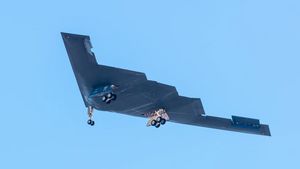SIDOARJO - The Meteorology, Climatology and Geophysics Agency (BMKG) Juanda said that if a number of areas in East Java are currently entering a day without a shadow or culmination, namely the phenomenon when the Sun is precisely at its highest position on the sky. "When the sun's declination is equal to the observer's latitude, the phenomenon is referred to as the main culmination. At that time, the Sun will be directly above the observer's head or at the zenith point. As a result, the image of an upright object will appear 'disappearing', because it overlaps with the object itself," he said Head of Data and Information of BMKG Juanda Teguh Tri Susanto, Saturday. He said, this happened because the equatorial plane of the earth or the Earth's plane of rotation was not precisely narrowed to the ecliptic plane of the Earth's revolution. So that the position of the sun from the earth would be seen to continue to change throughout the year. "This is referred to as the daily motion of the sun," he said. He said, the main culmination in the territory of Indonesia would occur twice a year and time not be far from when the Sun was on the equator. "In other cities, the main culmination occurs when the declination of the sun is equal to the latitude of the city," he said. He said, currently there was also El Nino in September to November which in general El Nino had an impact on the decline in rainfall rainfall in East Java by more than 40 percent. However, when entering December to February, in general, the impact of El Nino affected the decline in East Java rainfall by 1 -20 percent. "The impact of El Nino is very dependent on the condition of the active gradient wind. So it cannot be equated with the impact of El Nino on each month," he said.
The English, Chinese, Japanese, Arabic, and French versions are automatically generated by the AI. So there may still be inaccuracies in translating, please always see Indonesian as our main language. (system supported by DigitalSiber.id)









